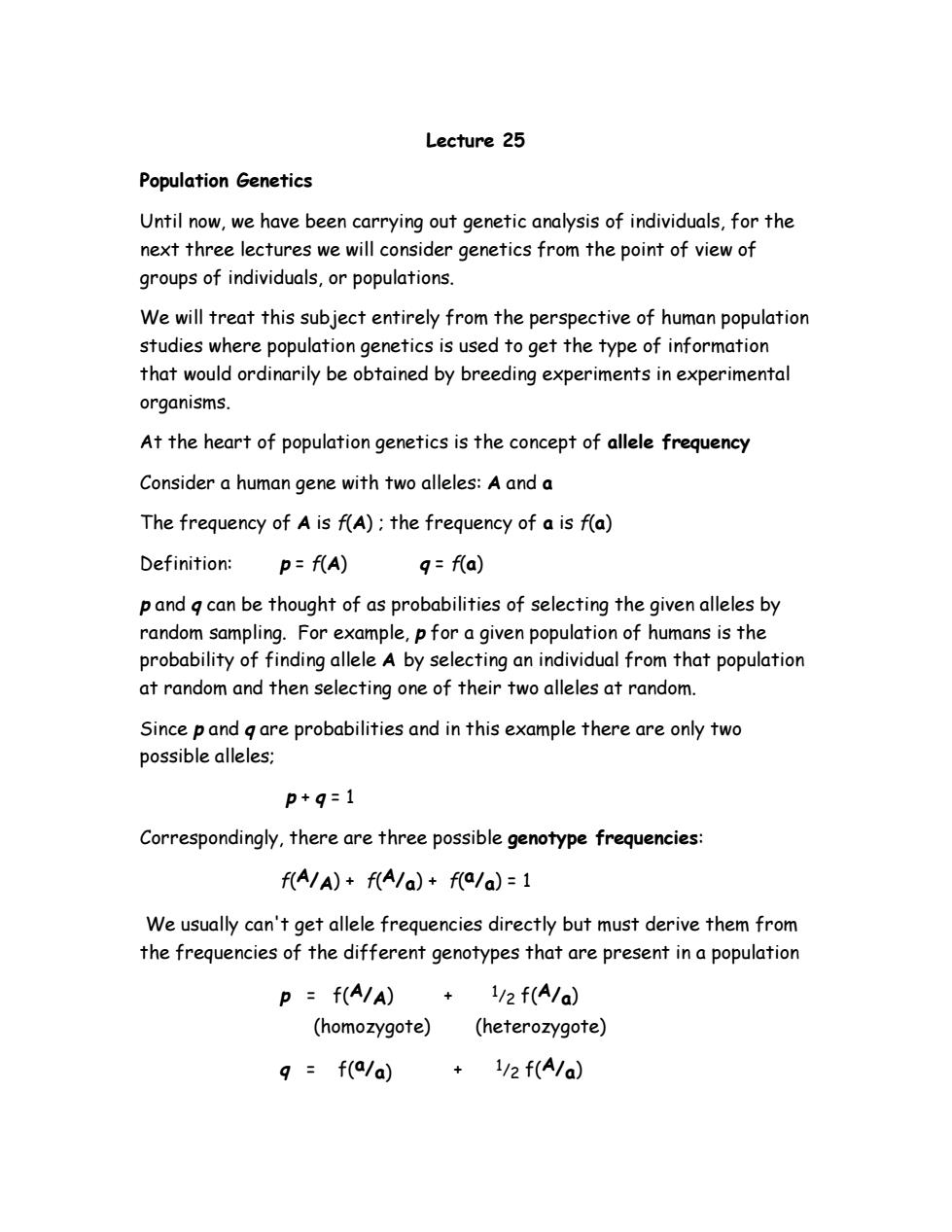正在加载图片...

Lecture 25 Population Genetics Until now,we have been carrying out genetic analysis of individuals,for the next three lectures we will consider genetics from the point of view of groups of individuals,or populations. We will treat this subject entirely from the perspective of human population studies where population genetics is used to get the type of information that would ordinarily be obtained by breeding experiments in experimental organisms. At the heart of population genetics is the concept of allele frequency Consider a human gene with two alleles:A and a The frequency of A is f(A);the frequency of a is f(a) Definition:p=f(A) q=fa) p and q can be thought of as probabilities of selecting the given alleles by random sampling.For example,p for a given population of humans is the probability of finding allele A by selecting an individual from that population at random and then selecting one of their two alleles at random. Since p and q are probabilities and in this example there are only two possible alleles; p+9=1 Correspondingly,there are three possible genotype frequencies: f(A/A)+f(A/a)+f(a/a)=1 We usually can't get allele frequencies directly but must derive them from the frequencies of the different genotypes that are present in a population p f(A/A)+1/2 f(A/a) (homozygote) (heterozygote) q f(a/a) 1/2f(A/a)Lecture 25 Population Genetics Until now, we have been carrying out genetic analysis of individuals, for the next three lectures we will consider genetics from the point of view of groups of individuals, or populations. We will treat this subject entirely from the perspective of human population studies where population genetics is used to get the type of information that would ordinarily be obtained by breeding experiments in experimental organisms. At the heart of population genetics is the concept of allele frequency Consider a human gene with two alleles: A and a The frequency of A is f(A) ; the frequency of a is f(a) Definition: p = f(A) q = f(a) p and q can be thought of as probabilities of selecting the given alleles by random sampling. For example, p for a given population of humans is the probability of finding allele A by selecting an individual from that population at random and then selecting one of their two alleles at random. Since p and q are probabilities and in this example there are only two possible alleles; p + q = 1 Correspondingly, there are three possible genotype frequencies: f(A/A) + f(A/a) + f(a/a) = 1 We usually can't get allele frequencies directly but must derive them from the frequencies of the different genotypes that are present in a population p = f(A/A) + 1/2 f(A/a) (homozygote) (heterozygote) q = f(a/a) + 1/2 f(A/a)